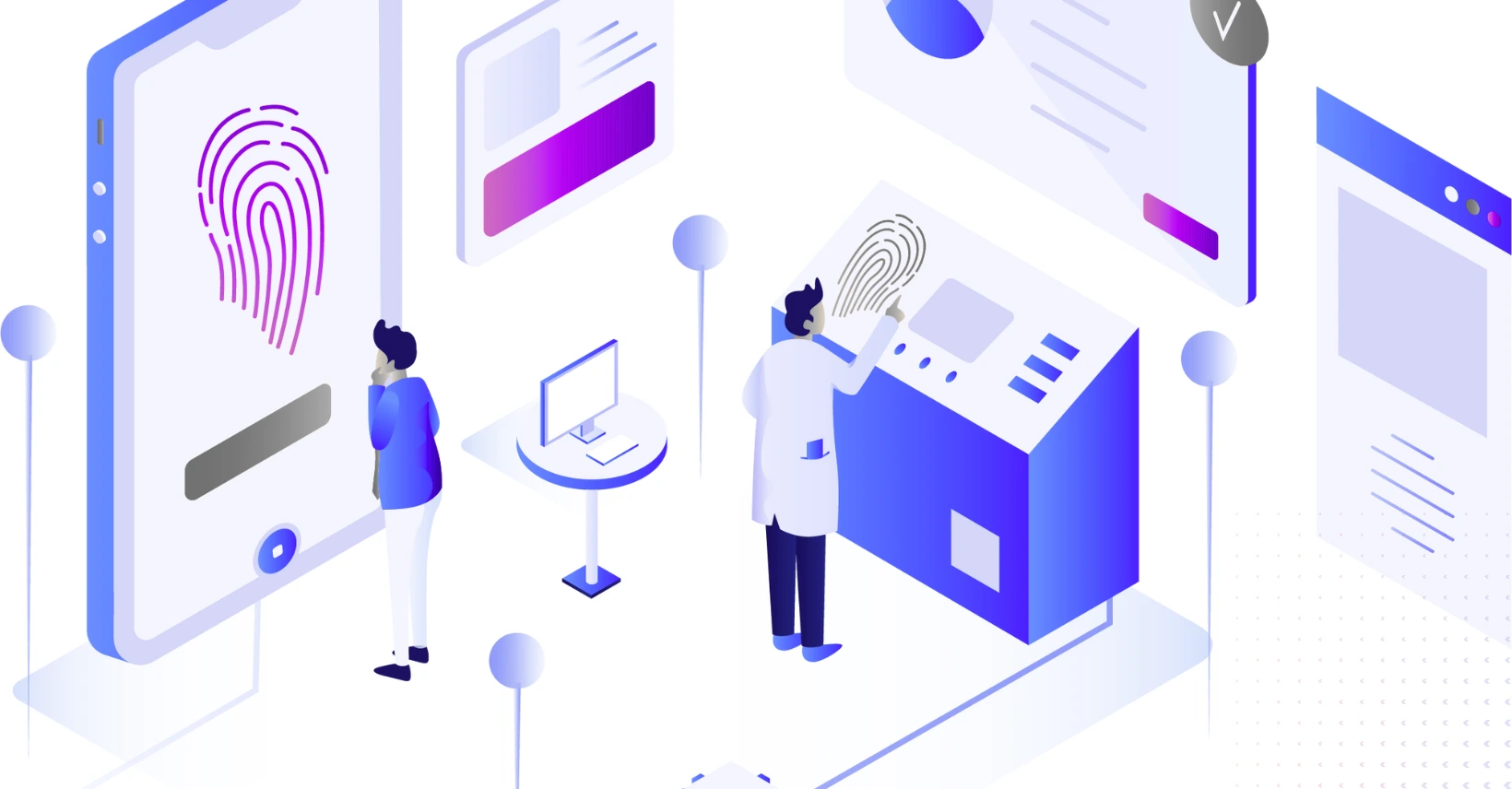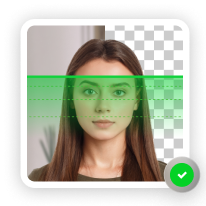Curious about the state of biometrics in 2026?
Then look no further.
We’ve gathered and verified the most important stats to show you where this technology stands today.
Top Biometric Stats
- Over 50% of users in the US now use biometric authentication daily, indicating that mainstream adoption is underway.
- The most popular biometric technology is fingerprint scanning, which is used by 70% of Americans.
- The biometric technologies market was worth $57B in 2025 and is expected to grow 14.5% annually, hitting $192.1B by 2034.
- The global voice biometrics market was valued at $2.87B in 2025 and is expected to reach $15.69B by 2032, growing at a 27.5% CAGR.
- The most widespread use of biometrics is unlocking a device, with 42% of Americans citing this as their primary use.
- Over 80% of Americans are concerned their biometric information will be misused.
- Only 30% of experts in the Americas think today’s level of government regulations related to biometrics is strict enough.
Market Size, Growth, and Adoption of Biometric Technologies
- Global comfort with Digital IDs rose to 79% in 2025, up from 74% in 2024.
- The global passwordless authentication market was worth $21.58B in 2025 and is forecast to climb to $60.34B by 2032, growing at a 15.8% CAGR.
- The global biometric system market was valued at $36.57B in 2024 and is expected to rise to $113.22B by 2032, with a 15.2% CAGR.
- The global airport biometrics market was valued at $2.42B in 2022 and is projected to reach $6.5B by 2032, growing at a 10.38% CAGR from 2024 to 2032.
- The facial recognition market was about $5B in 2022 and is expected to reach $19.3B by 2032.
- Automated fingerprint identification systems (AFIS) use digital imaging to match fingerprints against stored records and are widely used in law enforcement, healthcare, and government. The market was valued at $5.32B in 2022 and is projected to reach $15.42B by 2028.
- The number of global digital identity users is projected to grow from 155M in 2024 to 1.27B in 2029.
- 81% of smartphones now have biometric features turned on.
Public Attitudes, Fears, and Acceptance
- Fingerprint scanning is the most acceptable biometric technology, with 86% of Americans feeling comfortable with it.
- 17% of US adults fear for the safety of their biometric data.
- 16% of Americans believe biometric technologies can be breached.
- 59% of Americans accept law enforcement’s use of biometric systems in situations of public threat, but mass surveillance (73%) is what people fear the most.
| Fears Associated with Biometric Tech | Share of Respondents Who Share Them (In %) |
| Mass surveillance | 73 |
| Misidentification | 59 |
| Demographic differentials/bias | 56 |
- Only 3% of travelers reported having no concerns about biometric identification in 2025.
Expert Views, Oversight, and Regulatory Landscape
- Facial recognition should be used by police, according to 50% of biometric industry experts.
- 42% of industry professionals believe countries should regulate biometric technologies more strictly.
- 57% of experts think the legislation is too relaxed regarding the commercial use of biometrics.
- On the other hand, more than 70% of industry experts believe that border control with biometric technologies is adequately regulated.
- 60% of European biometric experts are satisfied with their region’s biometric regulations.
- 40% of pundits from Australia and New Zealand believe their governments regulate biometrics sufficiently.
- 30% of industry specialists point to social media and school administration as the primary areas where biometric technologies shouldn’t be used.
- 80% of privacy experts say biometric systems shouldn’t operate without human oversight.
Airport Biometrics: Usage, Satisfaction, and Traveler Behavior
- LAX introduced the Enhanced Passenger Processing program in June 2025 in its Tom Bradley and Terminal 7 areas, allowing US citizens to verify their identity via facial recognition instead of physical documents. The rollout cut wait times by 25% for US citizens.
- The share of travelers who haven’t used airport biometrics fell to 31% in 2025, down from 41% in 2024.
- 46% of travelers have used biometric identification at airports, mainly at immigration checkpoints (43%). Of those, 84% were satisfied.
- In 2024, half of global airport passengers (50%) used biometrics at airports.
- In 2024, 73% of airport passengers expressed a preference for using biometric data over traditional documents such as passports and boarding passes.
- In 2024, 84% of airport passengers worldwide were very or somewhat satisfied with the use of biometrics.
- In 2025, 62% of travelers preferred biometric screening over traditional border control counters.
- In 2024, 48% of travelers under 25 preferred biometrics over passports and boarding passes, compared with 43% of those aged 56 to 75.
TSA-Specific Perceptions and Willingness to Share Data
- In 2024, 78% of Americans, including 79% of flyers, supported TSA’s use of biometrics for ID checks.
- Support for TSA biometrics reached 86% among PreCheck travelers in 2024.
- In 2024, 60% of Americans trusted TSA with their biometric data, including 61% of flyers and 71% of PreCheck members.
- In 2024, 62% of Americans and 66% of flyers were aware that TSA uses biometrics at airport checkpoints.
- In 2024, 56% of Americans said they’d be more supportive of TSA biometrics if the data were deleted within hours after travel.
- In 2024, 53% of Americans said they’d be more supportive of TSA biometrics if it were explicitly used to stop terrorism.
- In 2024, 51% of Americans would be more supportive of TSA biometrics if safeguards prevented data-sharing with other agencies.
- In 2024, among Americans who supported TSA biometrics, 71% cited stopping terrorism and human trafficking, while 66% cited safer airports.
- In 2024, 46% of Americans said they’d provide fingerprints to TSA if it sped up security.
- In 2024, 75% of Americans were willing to share their driver’s license photo and 73% their passport photo with TSA to speed up screening.
- In 2024, only 16% of Americans believed it was fair for a senator to block travelers from opting for facial recognition for faster screening.
Learn More
Looking for more statistics? Check out these:
- AI Statistics
- VR Statistics
- Virtual Meeting Statistics
- Smartphone Usage Statistics
- Average Screen Time Statistics
- Mobile App Statistics
- Facial Recognition Statistics
Sources
- Aware, “Consumer Report from Aware Reveals Widespread Trust in Biometrics”
- Airlines for America, “Air Travelers in America”
- Allied Market Research, “Biometric Technology Market”
- Biometrics Institute, “Biometrics Institute Industry Survey”
- Biometric Update, “Cisco Report: 81 Percent of All Smartphones Have Biometrics Enabled”
- CNBC, “Biometric Processing at Airports Is Preferred Despite Concerns”
- Duo Security, “The Duo Trusted Access Report”
- Future Travel Experience, “LAX Unveils New $1.7BN West Gates Expansion Equipped With Latest Technology”
- Fortune Business Insights, “Voice Biometrics Market Size & Share”
- Fortune Business Insights, “Passwordless Authentication Market Size & Share”
- Fortune Business Insights, “Biometric System Market Size & Share”
- Future Travel Experience, “Spirit Airlines Rolls Out Biometric Check-In at US Airports”
- German R., Barber K., “Consumer Attitudes About Biometric Authentication”
- Grother P., Ngan M., Hanaoka K., “Face Recognition Vendor Test (FRVT) Part 3: Demographic Effects”
- ID Tech, “LAX Launches Biometric Entry System for U.S. Citizens with Enhanced Passenger Processing”
- IATA, “Passengers Want Convenience and Technology to Improve Processes, Regional Preferences Diverging”
- International Air Transport Association, “Global Passenger Survey”
- Kasim K., Winter S., Liu D., Keebler J., Spence T., “Passengers’ Perceptions on the Use of Biometrics at Airports”
- Market Research, “Biometric Technologies Market Outlook”
- MRFR, “Airport Biometrics Market”
- PennState, “Research Finds US Adults Have Context-Specific Views on Biometric Technology Use”
- SITA, “Passenger IT Insights”
- Statista, “Airport Biometric Automation Market Revenue Forecast”
- Statista, “Americans Accept Facial Recognition for Public Safety”
- Statista, “Automated Fingerprint Identification System Market Revenue”
- Statista, “Facial Recognition Market Size”
- Statista, “In Your Opinion, What Is the Strongest Argument Against Using Biometric Authentication?”
- Statista, “Iris Recognition Market Revenue Worldwide”
- Statista, “Share of Active Phones With Enabled Biometrics in North America, Western Europe & Asia Pacific”
- Statista, “Share of Airports Worldwide Expecting to Trial New Technologies in the Next Three Years”
- Statista, “Share of Consumers Who Trust That Their Biometric Data Is Safeguarded and Used Properly in the United States”
- Statista, “Signature Verification Market Revenue”
- The New York Times, “Your Face Is, or Will Be, Your Boarding Pass”
- U.S. Travel Association, “Biometrics Airport Security”
- Wikipedia, “Biometrics”
- Wikipedia, “Countries Applying Biometrics”

As a Digital PR specialist and a member of the Society of Professional Journalists (SPJ), Max has 5+ years of writing experience.
Over the course of his career, Max’s work has garnered significant attention, with features in numerous prominent publications such as The New York Times, Forbes, Inc., Business Insider, Fast Company, Entrepreneur, BBC, TechRepublic, Glassdoor, and G2.









